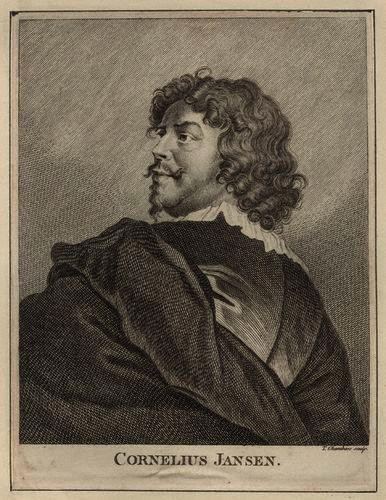Cornelius Johnson
Cornelius Johnson (1593 – 5 August 1661) was an English painter known for his portrait works during the early 17th century. Johnson, whose work spans the late Tudor period and early Stuart period, is noted for his detailed and refined approach to portrait painting, a style that captured the nuances of his subjects with remarkable clarity and depth.
Early Life[edit | edit source]
Cornelius Johnson, also known as Cornelius Janssen van Ceulen, was born in London, the son of Dutch emigrants. Despite his family's origins, Johnson spent the majority of his career in England, where he became one of the most sought-after portraitists of his time. Little is known about his early life and training, but it is believed that he was influenced by the works of contemporary Dutch and Flemish painters, which is reflected in the meticulous detail and sophisticated use of light in his paintings.
Career[edit | edit source]
Johnson's career flourished during a period of significant political and social change in England. He became a favored artist among the English gentry and nobility, painting portraits that were admired for their elegance and realism. Johnson's ability to capture the personality and stature of his sitters made him a popular choice for those wishing to preserve their likeness for posterity.
In 1632, Johnson was appointed as the official Court Painter to Charles I, a position that further elevated his status and reputation. Despite this royal patronage, the outbreak of the English Civil War in 1642 and the subsequent rise of the Puritan regime under Oliver Cromwell led to a decline in demand for his work. This period of turmoil forced Johnson, like many artists of his time, to adapt his artistic output to the changing tastes and political climate.
Later Life and Death[edit | edit source]
As the political landscape of England shifted, Johnson eventually moved to the Netherlands, where he continued to work until his death in Middelburg in 1661. His later works, produced during his time in the Netherlands, maintained the high quality and attention to detail that had characterized his earlier portraits, but they also reflected the influence of Dutch artistic traditions, which he incorporated into his style.
Legacy[edit | edit source]
Cornelius Johnson's contributions to portrait painting have been recognized for their technical skill and artistic merit. His portraits are held in high esteem, not only for their aesthetic qualities but also for their historical significance, providing insight into the personalities and fashions of the English and Dutch elite during the 17th century. Today, his works can be found in major museums and collections around the world, testament to his enduring legacy as a master portraitist.
Search WikiMD
Ad.Tired of being Overweight? Try W8MD's physician weight loss program.
Semaglutide (Ozempic / Wegovy and Tirzepatide (Mounjaro / Zepbound) available.
Advertise on WikiMD
|
WikiMD's Wellness Encyclopedia |
| Let Food Be Thy Medicine Medicine Thy Food - Hippocrates |
Translate this page: - East Asian
中文,
日本,
한국어,
South Asian
हिन्दी,
தமிழ்,
తెలుగు,
Urdu,
ಕನ್ನಡ,
Southeast Asian
Indonesian,
Vietnamese,
Thai,
မြန်မာဘာသာ,
বাংলা
European
español,
Deutsch,
français,
Greek,
português do Brasil,
polski,
română,
русский,
Nederlands,
norsk,
svenska,
suomi,
Italian
Middle Eastern & African
عربى,
Turkish,
Persian,
Hebrew,
Afrikaans,
isiZulu,
Kiswahili,
Other
Bulgarian,
Hungarian,
Czech,
Swedish,
മലയാളം,
मराठी,
ਪੰਜਾਬੀ,
ગુજરાતી,
Portuguese,
Ukrainian
Medical Disclaimer: WikiMD is not a substitute for professional medical advice. The information on WikiMD is provided as an information resource only, may be incorrect, outdated or misleading, and is not to be used or relied on for any diagnostic or treatment purposes. Please consult your health care provider before making any healthcare decisions or for guidance about a specific medical condition. WikiMD expressly disclaims responsibility, and shall have no liability, for any damages, loss, injury, or liability whatsoever suffered as a result of your reliance on the information contained in this site. By visiting this site you agree to the foregoing terms and conditions, which may from time to time be changed or supplemented by WikiMD. If you do not agree to the foregoing terms and conditions, you should not enter or use this site. See full disclaimer.
Credits:Most images are courtesy of Wikimedia commons, and templates Wikipedia, licensed under CC BY SA or similar.
Contributors: Prab R. Tumpati, MD

